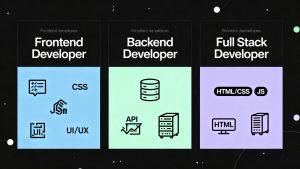Artificial intelligence is rapidly becoming a foundational tool in quality assurance, transforming the way test scenarios are generated, risks are detected, and test plans are devised. By leveraging effective prompt engineering, teams deliver clearer, more actionable results during every phase of software testing.
Prompt Engineering: Unlocking AI’s Potential for QA
Prompt engineering refines how testers interact with AI by shaping roles, providing context, and structuring output formats. When prompts are detailed and relevant, AI delivers highly-focused test scenarios and risk analysis that extend well beyond basic automation. For instance, QA engineers who define role, application context, and output requirements guide AI to uncover edge cases and high-risk scenarios that might otherwise remain hidden. This collaborative approach enables faster coverage of complex test cases and more reliable identification of issues before production.
Case Study: Smarter Scenario Generation with AI
One project examined the challenge of syncing menu item availability to an ordering system. With a well-structured prompt, AI generated overlooked edge cases—such as items marked available in the app but out of stock in-store—allowing teams to preempt serious bugs like unfulfillable orders and costly refunds. When prompts are precise, AI becomes an intelligent partner capable of surfacing high-value scenarios for rapid test creation.
Crafting Effective Prompts: Structures and Techniques
Testers boost AI accuracy by:
- Defining roles (e.g., senior QA engineer, performance tester, security specialist)
- Providing context (target feature, business rules, constraints)
- Setting output formats (tables, checklists, MD files)
Following this approach produces prioritized, structured scenarios that slot directly into test plans. Techniques like decomposition (breaking tasks down), role prompting, structured outputs, and chain-of-thought reasoning further elevate result quality. Testers can even prompt AI to self-evaluate coverage for more robust outcomes.
How AI Enhances Entire Software Testing Workflows
AI now acts as a smart assistant throughout the QA lifecycle:
- During test planning, AI accelerates brainstorming and coverage mapping
- For scenario creation, AI supplies structured, edge-focused scenarios and proposes overlooked tests
- At execution and automation, AI assists with script generation and prioritizing critical test cases
- In reporting, AI can summarize results, identify risk patterns, and translate findings into business-friendly formats
Instead of replacing testers, AI augments their workflows by helping them operate faster, think more critically, and ensure greater coverage with less manual effort.
Best Practices for Prompt Engineering in Software Testing
To maximize AI’s impact, testers should:
- Seek clarity over completeness by specifying exactly what is needed in each prompt
- Use formats that enable immediate test plan integration
- Treat AI outputs as drafts to validate, iterate, and refine—not finished products
- Prompt for risk-aware, high-impact scenarios and edge cases
- Apply a feedback loop to continually improve output quality
The true strength of AI in software testing lies in how well testers guide its reasoning. Human judgment remains essential to filter outputs, validate relevance, and ensure comprehensive coverage. By applying robust prompt engineering principles, organizations transform AI into an invaluable QA partner—accelerating scenario generation, increasing risk detection, and supporting higher-value testing at every stage.
Read more such articles from our Newsletter here.



